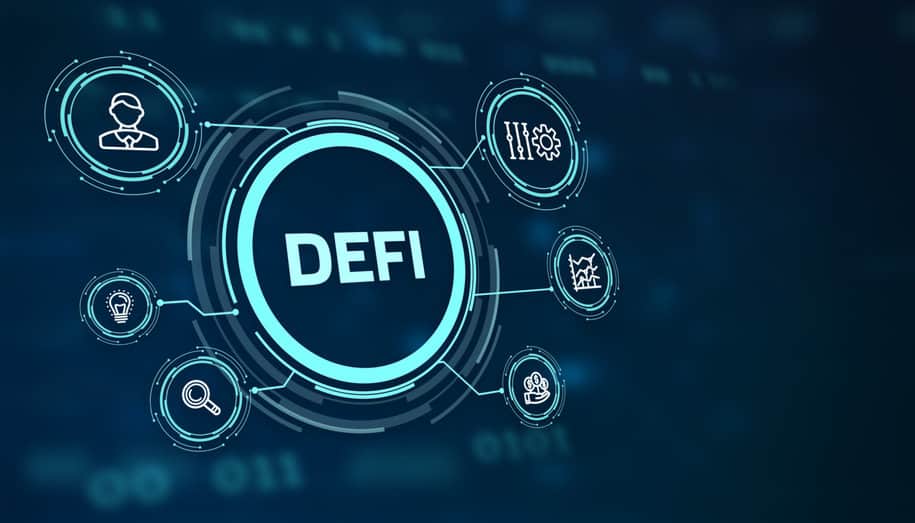Table of Contents
DeFi (Decentralized Finance) has revolutionized the financial industry by giving people unprecedented access to financial services that are built on blockchain technology. Maintaining a careful watch on your investment portfolio has never been more important given how quickly the DeFi landscape is changing. In this article, you will learn how to manage your DeFI portfolio using DeFi Portfolio Trackers.
What is DeFi and How Does It Work?
Understanding DeFi’s foundational ideas is crucial before venturing further. A variety of financial services built on blockchains such as including lending, borrowing, trading, and yield farming, are referred to as DeFi, or decentralized finance, and they are built on blockchain technology, especially on the Ethereum network.
Ethereum is the engine behind most of its protocols and smart contracts. Anyone entering this creative and interesting field must have a solid foundation in DeFi. The principle behind the working of DeFi is self-executing smart contracts.
What is a DeFi Portfolio?
Your decentralized financial investments, such as digital currencies, tokens, and other DeFi assets, are gathered in a DeFi portfolio. It symbolizes your exposure to various DeFi projects and enables you to effectively manage and keep an eye on your assets. These assets can be of multiple types:
NFTs (Non-Fungible Tokens): NFTs can be anything from digital artwork to collectibles and signify ownership of unique goods or material on the blockchain.
Ethereum DeFi Assets: A large portion of the DeFi ecosystem is supported by Ethereum, the top smart contract platform. It serves as a foundation for decentralized finance by facilitating the development of decentralized apps (DApps) and the execution of smart contracts.
BSC (Binance Smart Chain) DeFi Assets: This blockchain platform was introduced by Binance and is well-known for its quick and inexpensive transactions, making it a popular option for DeFi projects looking to offer effective services.
Polygon DeFi Assets: As an Ethereum layer 2 scaling solution, Polygon improves the network’s performance and scalability, luring numerous DeFi apps looking to make use of its features.
What is the Best Way to Track DeFi?
Making wise judgments requires keeping track of your DeFi investments. By using a dependable portfolio tracking technique, you can keep track of your assets, assess how they’re doing, and move quickly when the market conditions alter.
Given the dynamic nature of the DeFi domain, real-time updates and precise tracking are essential. In the context of DeFi, the “Ethereum,” “BSC,” and “Polygon” networks are especially important since they constitute the basis for many DeFi initiatives and transactions.
How to Keep Track of Your NFT Portfolio
Many investors are exploring the NFT (Non-Fungible Token) market in addition to more established cryptocurrencies. NFTs signify ownership of distinctive digital goods or material, including digital artwork, collectibles, and other things.
Monitoring NFTs in the context of portfolio tracking is important. All good DeFi Portfolio trackers are capable of managing and monitoring NFTs across various blockchain networks.
Top DeFi Portfolio Trackers
You need the appropriate tools to automate your DeFi portfolio tracking. For their functionality, usability, and dependability, a number of DeFi portfolio tracking solutions stand out. These applications give you access to historical data, transaction tracking, and insights into the performance of your holdings, assisting you in managing your DeFi assets more effectively.
Let’s look at some of the best DeFi portfolio trackers:
1. CoinStats DeFi Portfolio Tracker: It is one of the best DeFi Portfolio Tracker with features such as:
- Real-time data
- Historical Charts and Analysis
- Robust Security
- Multi-wallet and Multi-exchange support
- NFT tracking and management
- DeFi asset management
- AI-powered alerts
- Easy to use interface
- Mobile App and Browser extension.
2. Zerion Portfolio Tracker: Another good alternative to CoinStats DeFi portfolio tracker is Zerion, with features such as:
- Multi-asset support
- Security
- User-friendly
- Multiple DEX integration
- Mobile and desktop accessibility
Is a DeFi Wallet Safer than an Exchange?
Understanding the differences between utilizing a DeFi wallet and a centralized exchange is crucial for ensuring the security of your DeFi assets. Exchanges make trading more convenient, but because of their concentration, they frequently pose security issues. As your assets are not in your control, they can be stolen from the exchanges or get stuck on the exchange in case of issues with the exchange like in the case of FTX.
Contrarily, a DeFi wallet gives you more authority and security over your possessions. You control the keys to your DeFi wallet and have complete control over the assets stored in it. The idea of a “DeFi Portfolio Tracker” is consistent with the notion of securely managing your investments inside of a personal wallet.
Conclusion
The significance of efficient DeFi portfolio tracking cannot be emphasized, to sum up. Real-time information, precise tracking, and a thorough grasp of the instruments at your disposal are required due to the unpredictable nature of the DeFi market.
Recapping the main ideas covered in this guide, we’ve emphasized the value of monitoring your DeFi investments, introduced top-tier tools for monitoring your DeFi portfolio, emphasized the necessity of secure wallets, described the basics of DeFi, and provided advice on managing your NFT portfolio.
Remember to be knowledgeable and in charge of your assets as you continue to explore the world of DeFi and NFTs. You will be well-equipped to handle the dynamic and fascinating world of decentralized finance if you make use of the finest tools and techniques described in this tutorial.
Take charge of your DeFi and NFT investments and let knowledge fuel your success in this constantly changing environment.


